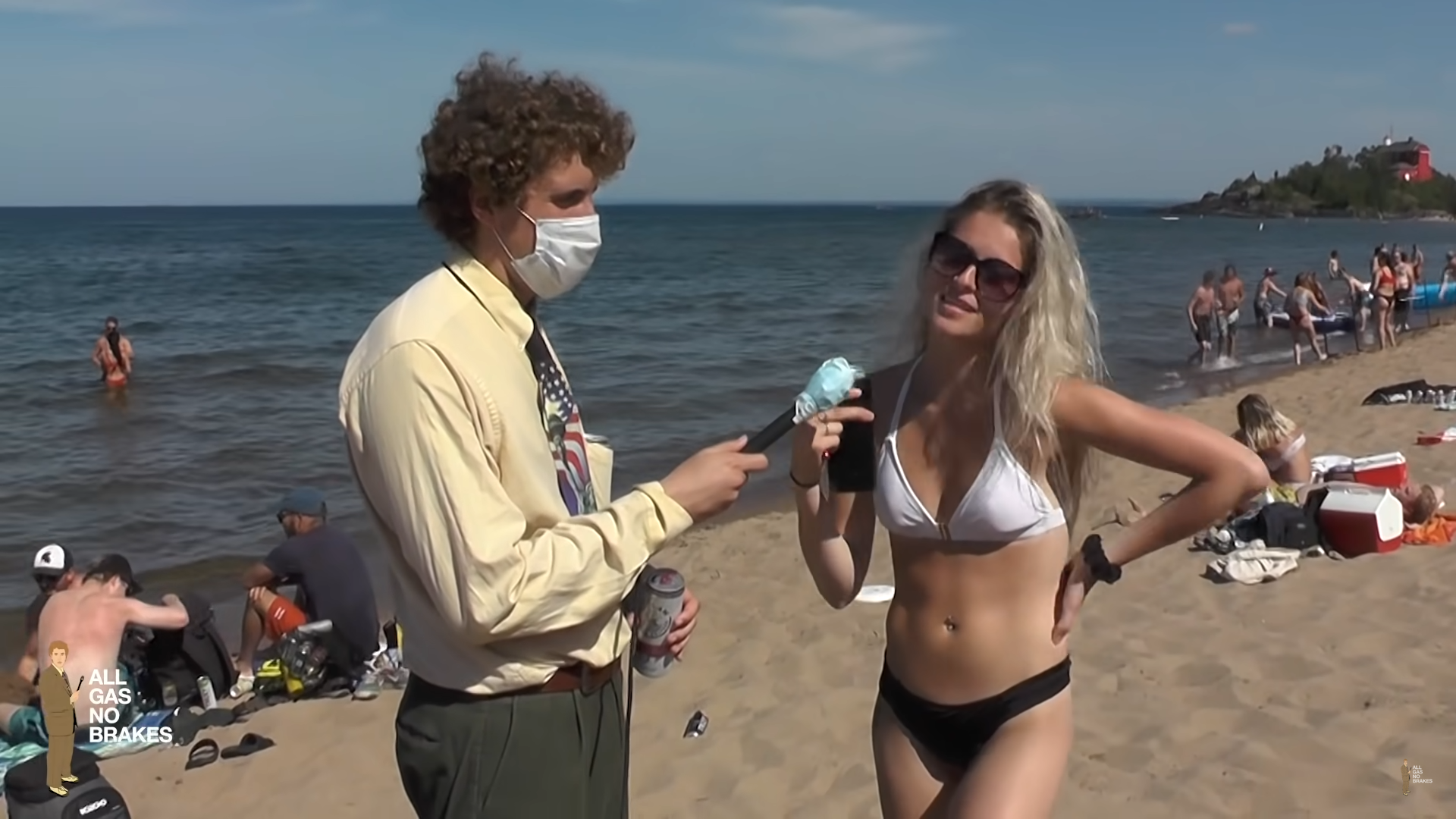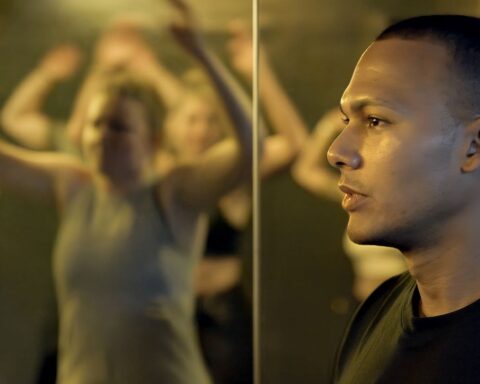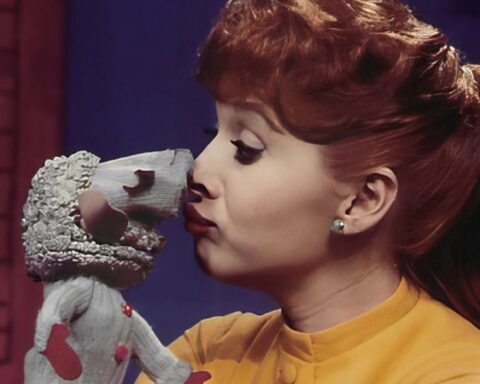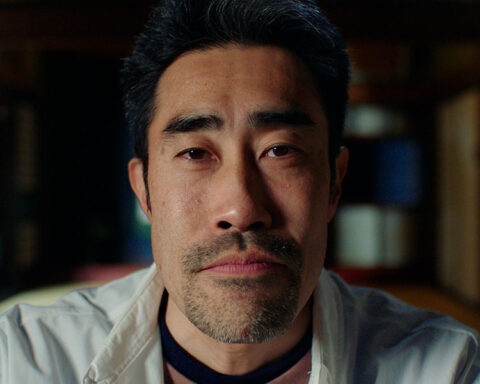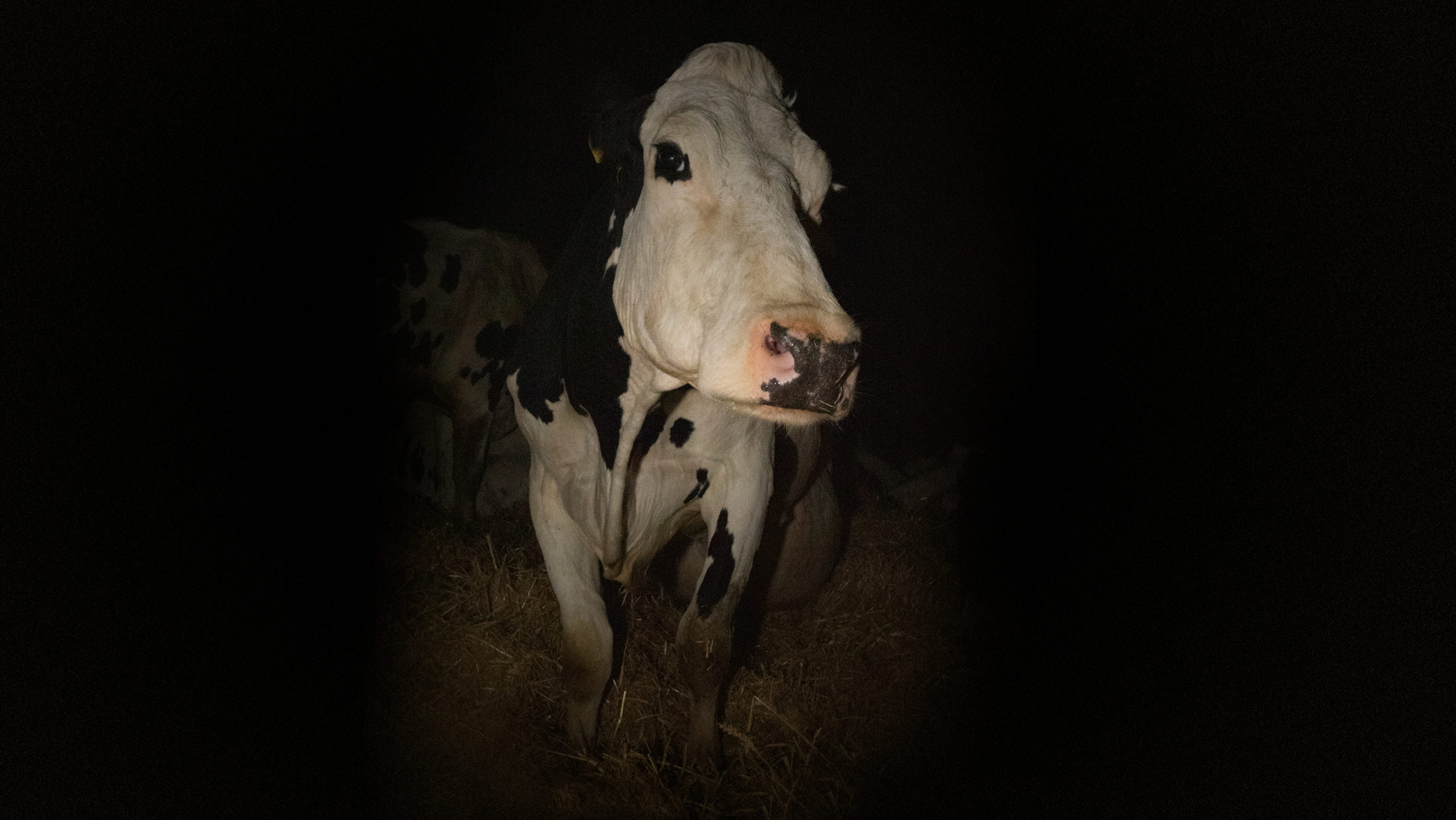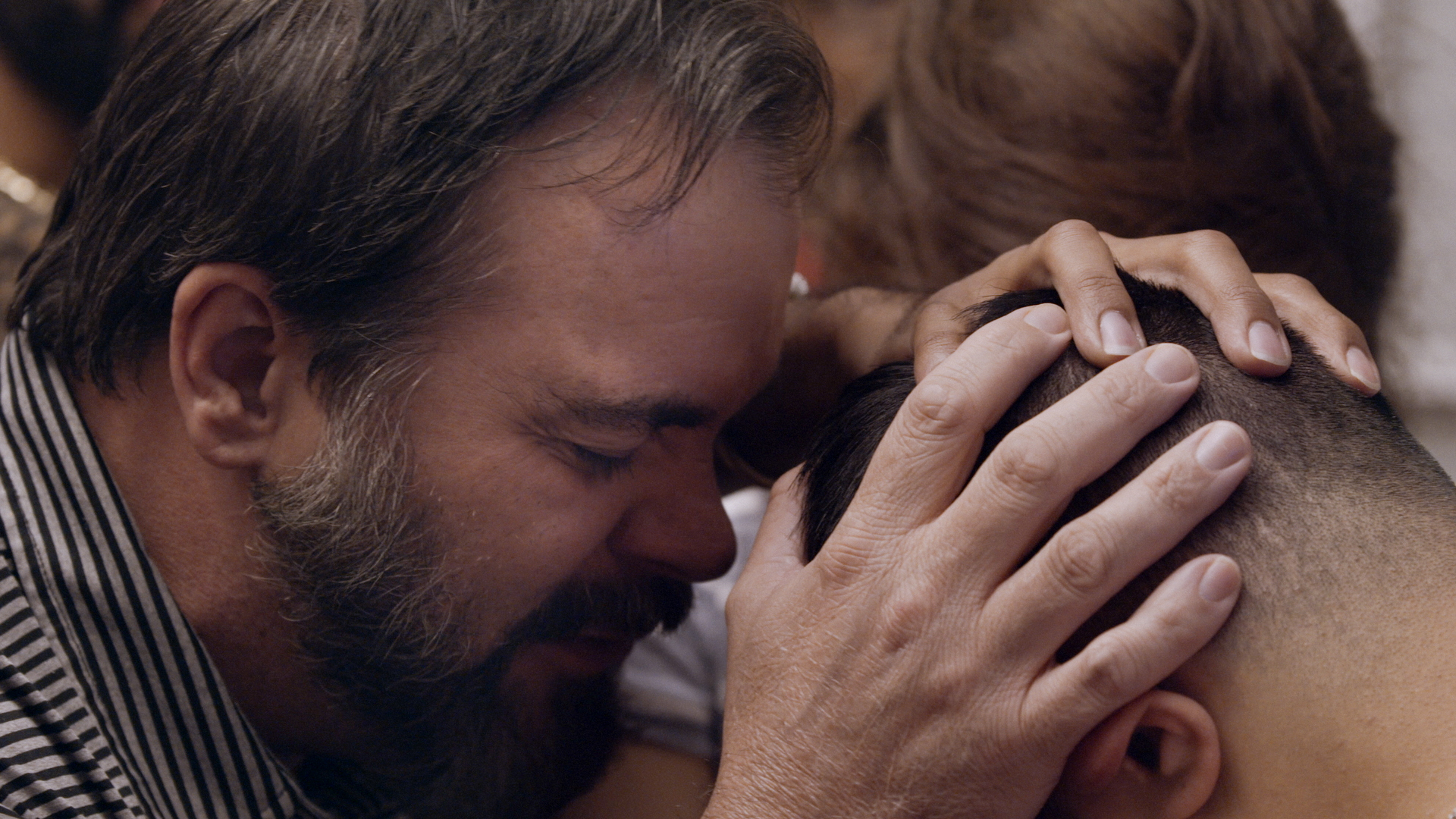This is a time of humdrum conformity in film and TV. Netflix, Disney, “prestige TV,” “indie film”: they all rely on established narratives, characters, and signifiers rather than originality to win audiences and critical praise.
Social and political discourse, once lively, are now similarly conformist. Once upon a time, complexity, nuance, sincerity, humour, modesty, and the like were treated as virtues. Now, at least in official media and cultural spheres, all issues are simplified, polarized, overheated. The volume and shrillness of the true believers obscure deeper realities of how people actually live; to wit, most people either don’t give a shit about politics or society at large, or hold a range of contradictory, heterodox beliefs unique to themselves.
It is this context that makes the three shows I want to discuss here so refreshing. Both How To with John Wilson and Painting with John are six-episode half-hour HBO shows that one might call documentaries strictly for lack of a better word; in each, it is more the voice of the show’s creator—anxious New York 30-something John Wilson and sexagenarian Lounge Lizard John Lurie, respectively—and their ability to sweep audiences along with their associative digressions, rather than any obvious narrative or theme, that gives the thing coherence. The other show, All Gas No Brakes, is a YouTube (and Patreon) phenomenon of interview-based, staccato-paced gonzo journalism conducted by one Andrew Callaghan in provocative locales—a Proud Boys rally, a packed beach in the midst of COVID, a Black Lives Matter riot. More extroverted than How To and Painting, it shares with them a truth-telling impulse that would be naïve if it weren’t so uncompromising.
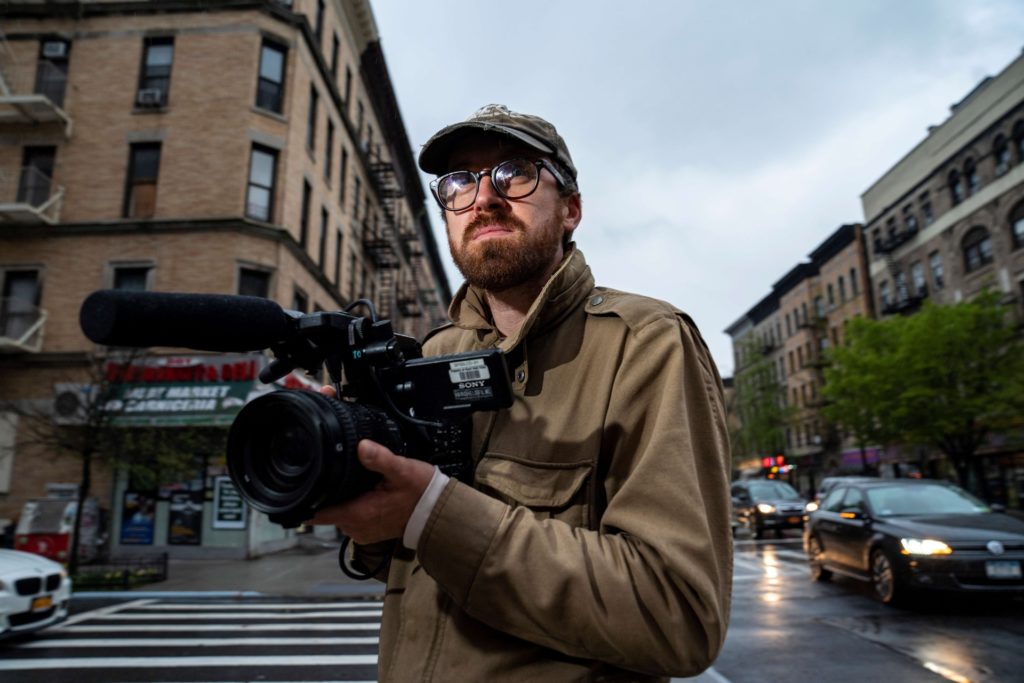
Wilson’s show purports to be a set of “how to’s,”—how to improve your memory; how to cook the perfect risotto—constructed out of a tremendous archive of videos shot largely on the streets of New York and interviews with people there and in the various locales his distractions bring him to, linked together by a distinctive voiceover that spends as much time punning on the visuals as it does telling a story. Wilson’s eye for the absurd—people in outlandish outfits, strange signage—and his musings about small talk, scaffolding, memory, placing plastic covers on his furniture, and so on, become his gateway to encounters variously funny, sad, profound, unsettling.
Wilson developed his trademark style, right down to his opening and closing remarks—typically, “Hey, New York,” and “This is John Wilson, thanks for watching”—in a series of short films made for Vimeo over the last few years, episodes of which took him not only around New York City but out to Toronto as a superfluous videographer for David Byrne’s show Contemporary Color and to Park City for the Sundance film festival. The HBO show differs from these early efforts in much the same way that the HBO version of High Maintenance, a show about an anonymous weed dealer encountering a gamut of Brooklyn characters in perfectly crafted vignettes, with which How To shares a family resemblance, differs from its Vimeo iteration: it’s a little more polished, a little more tightly crafted, a little wider-ranging. How To’s oddball humour, low-level but ever-present anxiety, and genuine warmth drew the attention of Nathan For You’s Nathan Fielder, the show’s other clear proximate influence, who served as executive producer.
Lurie’s show is a spiritual sequel to his cult early-’90s show Fishing With John, at least superficially. In each episode of Fishing, Lurie and a friend (Tom Waits, Jim Jarmusch, Willem Dafoe, Dennis Hopper, and Matt Dillon) travel to exotic locales to go fishing, largely fail to catch anything, and mostly just piss each other off. Apart from the title and something of the tone, though, Painting really has nothing to do with Fishing; “I didn’t think about it very much and didn’t actually expect how people would connect to the two things,” said Lurie in an interview with the Ringer. For one thing, Lurie is mostly alone in Painting, joined only occasionally by his two assistants, some locals, and his cameraman. And as aimless as Fishing could be, it’s nothing compared to the shambolic Painting.
In fact it’s hard to say quite what Painting is. Lurie does paint watercolours in every episode, but he doesn’t explain or exposit on what he’s doing, and says in interviews that the paintings he produces on screen are far from his best work, that he enters a trance state when painting that is not telegenic. Mostly what he does is play the raconteur, talking about his childhood or his years as a New York art star: the time he bought an eel for $200 and wrestled it for hours, the time he snorted cocaine for three hours in a broom closet with Rick James and Steve Rubell, the time his brother Evan broke all his stitches scat-singing along to Coltrane playing “Afro Blue” on Live at Birdland. Sometimes he muses about this or that: illness, laughter, the nature of art. Sometimes he rolls tires down a hill in his backyard or does funny dances. Yet it all somehow feels right. Like the associative logic that seamlessly links disparate parts of How To, Painting is held together—again, seamlessly—not by anything so tangible as logical narrative but by Lurie’s gruff, deadpan charisma, often expressed in a shrug at the end of a story, which sweeps us along with whatever he feels like presenting.
All Gas No Brakes is more jarring than Painting and How To, more obviously transgressive. Callaghan’s Fourth of July video on a Michigan beach in the midst of COVID begins not with an establishing shot, voiceover, or even title, but with a close-up of a man screaming “WHITE CLAW!!!” The video, edited at breakneck pace, seems at first like a typical Grand Guignol of American idiots partying in the middle of a pandemic. And that’s part of it, for sure. One guy keeps saying that what he’s most passionate about in life are “cocaine, alcohol, and bad bitches.” In an interview with VICE — clearly, along with Louis Theroux, All Gas’ biggest influence — Callaghan explains that his strategy is to stay as neutral as possible and play up the naïveté to get people to say more than they would be willing to say to mainstream media. And it works.
But what he gets isn’t always insanity or profanity. This is proper vox pop journalism, and people are far more heterodox than the discourse would suggest. Some people, even on that beach, are relatively thoughtful. They talk about the election. One guy talks about moving to Michigan from Baltimore and finding the people a lot friendlier. One—seemingly the only Black person on the beach, a nursing student—cuts in to say that COVID is real. Maybe the most interesting person is a guy making sandcastles. His friend says that his dad is an artist and taught him how to do it, and it makes him a chick magnet. It then cuts to the guy laughing and yelling, “My dad’s an artist! He taught me how to do this shit!” The particular mix of attitudes here is impossible to pin down in received categories: liberal, conservative, polite, vulgar—somehow none of it really applies, at least not in a straightforward way. Reality is far stranger. The value of All Gas is in moments like this, which make up the bulk of the work: vulgar, sensationalist, thoughtful, embarrassed. “I don’t even know what All Gas No Brakes is,” he said to VICE. “I just wanna show people how crazy things actually are.”
Each show, it seems to me, runs against the grain of every major cultural trend. Where discourse simplifies, these shows relentlessly search for the heterodox, the mysterious, the strange: one of the best scenes in How To is a discussion about Bong Joon-Ho’s Parasite between Wilson and a naked man in his bed demonstrating a device he has invented to regrow his foreskin. Formally, in place of the smooth surfaces that pass for high production values in film and television, they are deliberately lo-fi to the point that they parody the conventions of respectable media. The opening scene of Painting with John comes to mind. A smoothly edited montage of drone shots over a Caribbean jungle, paired with a banjo and sweeping strings, looks to signal something like a nature documentary. Then, in comes Lurie’s gravelly voice, murmuring, “Wow, look at that,” and then, as the drone moves closer to the treetops, panicking—“how do I slow it down?!”—before the drone crashes into the ground. Lurie, no longer the lithe young man from Down By Law but old and fat, walks onto his porch. “Fuck,” he frets, “That’s the opening of my show.”
Similarly, Wilson’s voiceover in How To leaves in, and is in fact at times built around, his stutters, anxious tics, and distractibility. In a bit about scaffolding, Wilson cuts himself off in the middle of a sentence to look at a dog passing by, and never gets around to finishing the thought. An instructive comparison could be drawn with the voiceover in what is, in my circles, the documentary of the season, Adam Curtis’ long awaited epic Can’t Get You Out of My Head. Curtis, in his voiceovers, always speaks from a place of absolute authority—whether or not he really knows whereof he speaks. Wilson often seems not to know where each sentence is going when it starts, the most modest utterance an unbearable high wire act he is desperate to finish. Insight, delivered somewhat cavalierly in Curtis’ film, feels earned in How To, all the more so for how sketchily it arrives.
Mockery of mainstream (one might once have said bourgeois) aesthetic conventions is nothing new, of course. But it has become increasingly rare in recent years, it seems to me, as its traditional venues—comedy, art and experimental film, new media—have become increasingly codified and co-opted into their own sorts of respectability politics. Witness the once transgressive Stephen Colbert taking it upon himself to deliver milquetoast liberal talking points in his ostensibly comic monologues, or the strained seriousness of so much arthouse fare.
Even in the once proud parodic tradition, there is something fresh in the approaches that Wilson and Lurie take. Two words come to mind: failure and intimacy. They both engage in the pretense that they are genuinely trying to make something conventional and have simply failed to pull it off, to comic or charming effect. The reasons for their failure vary. Wilson plays at being too anxious or distracted to give a proper voiceover or follow a clear narrative thread, but that’s only part of it. In fact, at his best, there is something quite a bit cleverer going on. In the first episode of his show, “How to Make Small Talk,” he does indeed try to make small talk with a variety of people, calling it “the glue that binds us all together and the armour that shields us from each other’s darkest thoughts.” But he fails, in increasingly dramatic fashion. One man he meets tells him that his hobby is catching child predators. A woman at a travel agency tells him about her divorce. And climactically, in Cancun, a young man reveals that he’s gone there because his friend killed himself and he wanted to get away for a while. Reflecting on his failure to keep things superficial with anybody, ever, Wilson jokingly concludes that we need to get all the hard stuff off our chests before graduating into a utopia of small talk.
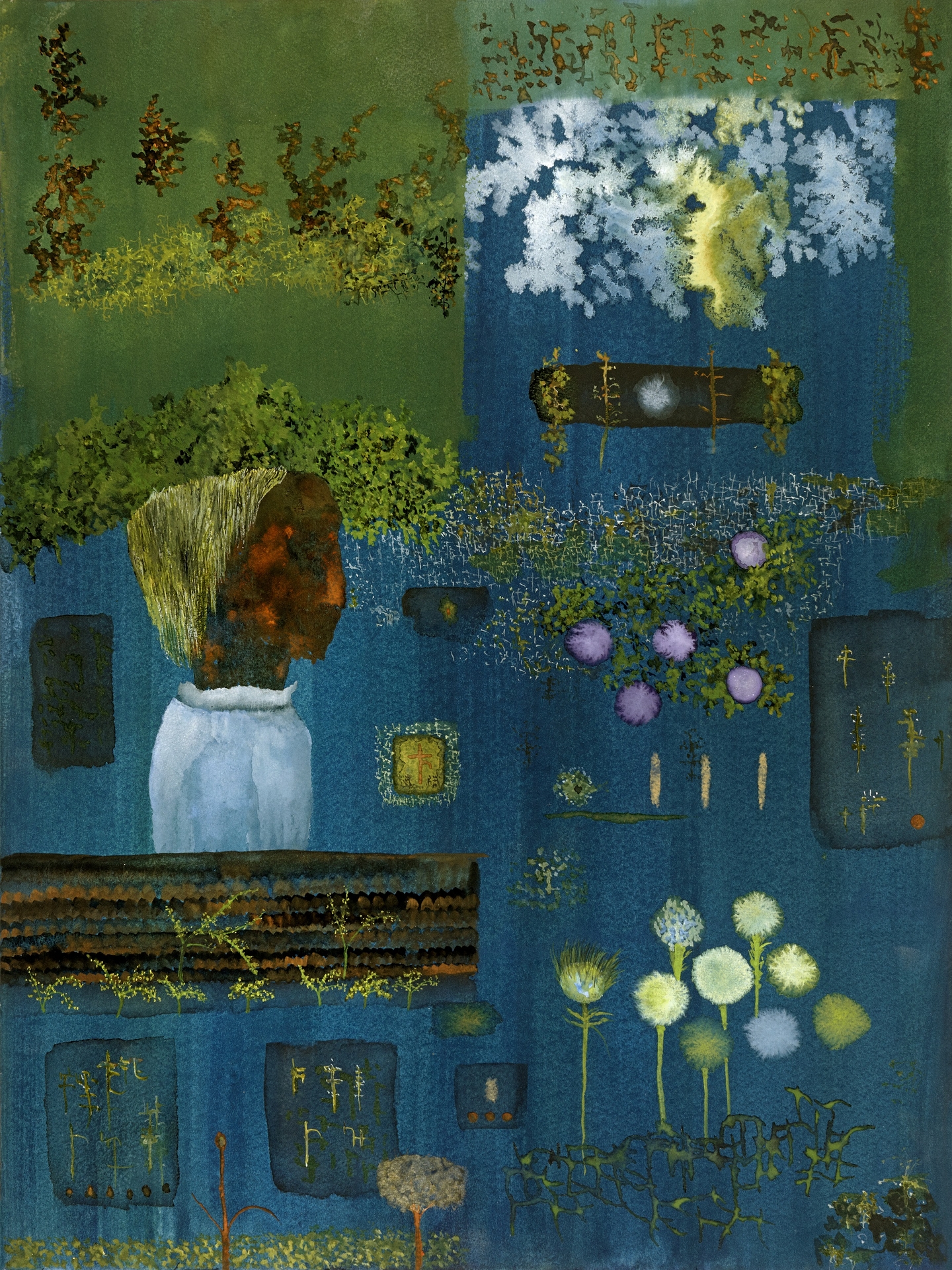
Lurie, for his part, follows up his failure to execute a proper drone shot with a failure to execute the polite smile he thinks people want to see. “My polite smile frightens people,” he says. The first thing he says in the episode proper is, fittingly, “Bob Ross was wrong. Everybody can’t paint, it’s not true.” Still, though, by the end of the series, Lurie is telling people to paint anyway: it’s good for you, good for the soul, even if you’re terrible at it. Failure is a virtue: to err is human, as they say. Maybe that’s the point. Lurie’s art—his painting and his music, for that matter, which early on he called “fake jazz”—is premised to a significant extent on unlearning conventions and making up his own. Children are born artists, he says, but it’s beaten out of them; in this and later episodes he praises deep, full laughs, pygmy music, and frogs’ mating calls, along the same lines.
The effect of these things is not I think primarily subversive or comic or intellectual but rather intimate. Wilson’s and Lurie’s failures are about getting at something human. The crashing drone and the silly dance and the stammering voice and the chance encounter with the profound are the point. They are about reclaiming control, asserting idiosyncrasy.
On that note, it is worth pointing out what Painting With John leaves out. Lurie became a cause célèbre in the early 2010s on the basis of a long and very strange New Yorker profile largely focused on his place in the ’80s downtown art scene (or at least the journalist’s fantasies thereof; the article begins, “From 1984 to 1989, everyone in downtown New York wanted to be John Lurie. Or sleep with him. Or punch him in the face.”), his experience with Lyme disease, and, mostly, the fact that he was—and, in all likelihood, still is—being stalked by a former friend who, irony of ironies, he had tried to help make his own painting show in the mid-2000s. In one sense, all of this is absolutely necessary background to Painting with John: it explains the vagueness of the Caribbean setting (he is, after all, more or less in hiding), his physical condition, and possibly why he thought to make a painting show at all. Yet in a deeper sense, the absence or minimizing of all this is even more significant. It allows Lurie to present himself as he desires and focus on what he wants to focus on, which is not after all about feeling sorry for himself but about finding joy wherever he may.
Real life does intrude, though, and the greatest achievement of these shows is to show how people navigate vicissitudes while retaining humanity. If so many (though, crucially, not all) of All Gas’ Fourth of July revellers—and, in other videos, bikers, racing fans, Bigfoot hunters, etc.—seem to be living in a fantasy world, Callaghan’s best video is brutally real. It is a document of a Black Lives Matter riot in Minneapolis. The video opens with an interview with a man in front of a burning building. “This is how people are actually feeling,” he says. Here, just about everybody Callaghan speaks to is eloquent and impassioned, even as they loot shops and burn down buildings—itself a kind of eloquence. The video is dedicated to George Floyd.
Reality intrudes into John Wilson’s world too. In the culminating moments of the last episode of How To, Wilson’s quest to make the make the perfect risotto for his beloved landlady is derailed by hours-long lines at grocery stores. It’s the first sign of the COVID-19 pandemic. It arrives subtly: a news item here and there, some nervous and uncertain conversations, Kleenex boxes taped to the outside of cabs. And then it’s there, and it changes everything. Everything and nothing, anyway. Wilson’s landlady goes to the hospital soon afterwards, but for a stroke, not for COVID, and returns home the next day. Wilson perseveres in his quest to make her the perfect risotto, and though he can’t bring it to her in person, he leaves it at the top of the stairs for her. When he looks out on the landing later, it’s gone.




